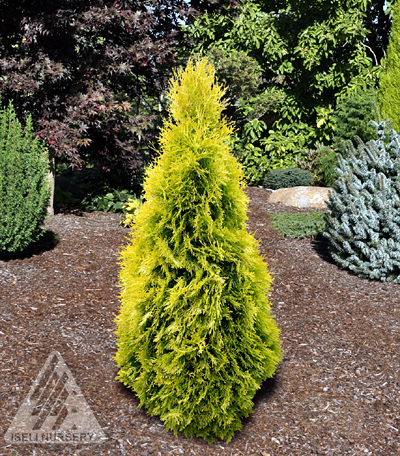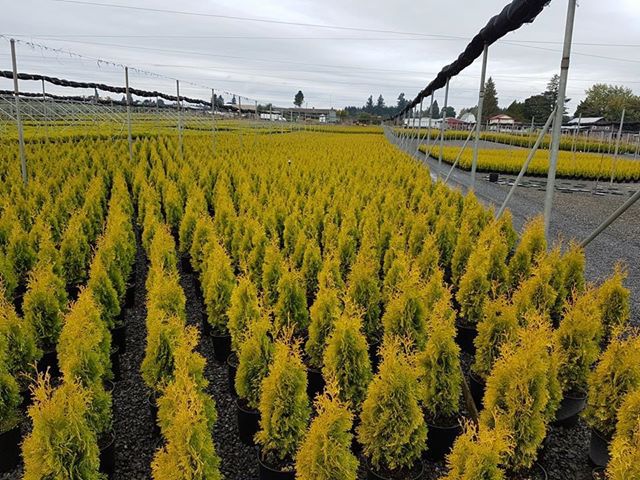Thuja occidentalis 'Jantar' is a narrow upright selection of arborvitae with invigorating, cheerful yellow foliage, with pointier tips at the terminals, especially at the top of the plant. Compared to other yellow selections of arborvitae, it has many more lateral branches which result in a much denser look. As cold weather approaches, a color change begins which results in a mellow orange-yellow for winter. After 10 years in the landscape, one can expect a mature specimen to stand about 6 feet (2 m) tall and 18 inches (50 cm) wide, suggesting an annual growth rate of slightly less than 1 foot (30 cm) a year in most locations.
This cultivar originating as a branch mutation found in 2000 by Jakub Jablonski of Lysomice, Poland on a specimen of T. occidentalis 'Smaragd.' "Jantar" translates into "amber" in the polish language and is an accurate description of the plant's captivating winter color. Breederplants, Inc., Reeuwijk, The Netherlands introduced it to the nursery trade and Iseli Nursery, Boring Oregon is credited with the U.S. introduction. This plant was granted U.S. plant patent number PP22296 in 2011.
'Jantar' was one of three plants selected in 2016 for the ACS Collectors' Conifer of the Year program.

